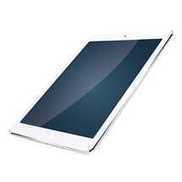The handheld tablet and computer-based curriculum application modules called “Exploring Physics” were developed through this grant and have just become available for instructors and students.
“Knowledge of science has changed dramatically in the past hundred years,” Chandrasekhar said. “Even the order in which classes are presented to students has been studied and evaluated. Biology has morphed into a technical, molecular study that combines elements of both chemistry and physics, so it’s logical that teaching physics first may have more of an impact. Through this grant, we were able to analyze and develop the practical tools science teachers can use in the classroom to help inspire students to higher accomplishments in STEM courses.”
The “A TIME for Physics First” Program is a collaboration among the University of Missouri and 37 school districts in Missouri, and other local colleges and organizations. The NSF Math-Science Partnership Institutes grant funded a teacher development program for 80 ninth-grade science teachers and provided summer academies and year-round support to enhance their physics knowledge and teaching methods.
Development of an inquiry- and modeling based experiential physics curriculum that could be used in the classroom, and the transformation of the paper-and-pencil curriculum to digital format, spearheaded by Chandrasekhar and Dorina Kosztin, teaching professor and associate chair of the Department of Physics and Astronomy in the College of Arts and Science at MU, were an integral part of the grant.
Research and publish the best content.
Get Started for FREE
Sign up with Facebook Sign up with X
I don't have a Facebook or a X account
Already have an account: Login
 Your new post is loading... Your new post is loading...
 Your new post is loading... Your new post is loading...
|










